Apple 'iTime' Patent Describes Modular WearableApple 'iTime' Patent Describes Modular Wearable
Electronic wristband might work with swappable modules as Apple appears to be thinking beyond the smartwatch for its first wearable.
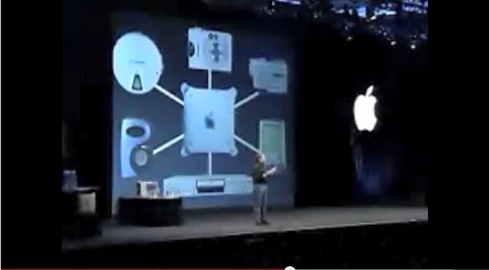
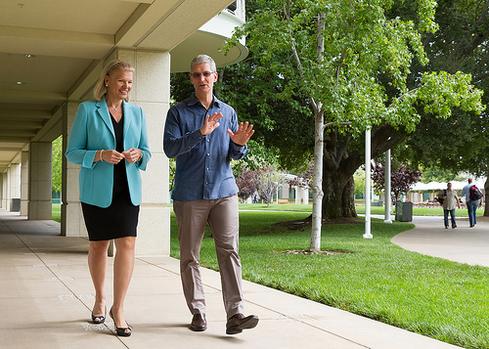
Apple-IBM Deal: 9 Moves Rivals Should Make
Apple-IBM Deal: 9 Moves Rivals Should Make (Click image for larger view and slideshow.)
Further evidence of Apple's interest in wearable devices surfaced on Tuesday with the publication of the company's latest U.S. patent.
"Wrist-worn electronic device and methods therefor" describes a range of possible configurations for wearable hardware that reflects Apple research. In one variant, the device is integrated with a wristband that includes electronic circuitry. In another, the device is a removable module that connects to the electronic wristband.
Apple refers to the device in one image as "iTime," and the patent explicitly states, "The invention pertains to an electronic wristwatch." Yet it would be underestimating Apple to assume the company is interested merely in creating a smartwatch along the lines of the Samsung Gear 2, the LG G Watch, or similar devices.
Figure 1: 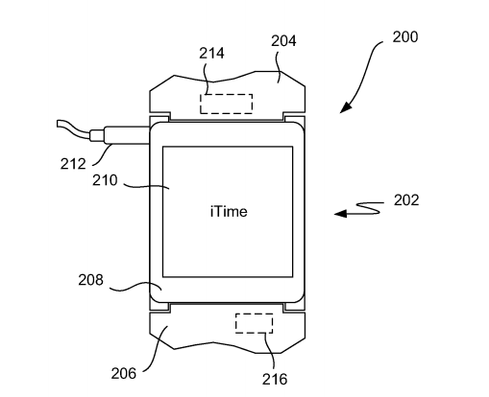
The operative word in Apple's patent is "wristband." It appears 138 times, significantly more than "watch" (eight times) or "smartwatch" (zero). It points to Apple's focus on form rather than function. "Wristband" tells you where the device will reside and how it will be secured. It does not focus on what the device will do because there's likely to be more than one Apple wearable device.
[Will a bigger iPhone hurt iPad sales? Read Apple Preps Larger iPhone.]
Apple might call its first wearable "iWatch" as the company has filed trademark applications for the name and public awareness of the name is already high. Or perhaps "iTime," but the company isn't looking to sell the latest in time-telling technology. Chronometry is a commodity capability; it's likely the least interesting possible function for a wrist-worn electronic device.
The patent describes the possibility -- Apple hasn't confirmed any such device -- of an electronic wristband that can accommodate and connect to a removeable hardware module. The small device within the wristband could be an iPod Nano or another piece of electronics entirely. Chances are that Apple, as a hardware company, will want to sell a variety of small, portable devices that fit into its electronic wristband.
Why an "electronic wristband" rather than just a wristband? Intellectual property rights and product control. Anyone can make a wristband out of fabric, plastic, leather, or metal. But only Apple and its authorized partners, if any, will be able to make wristbands with the proprietary hardware necessary to connect directly to Apple device modules.
Figure 2: 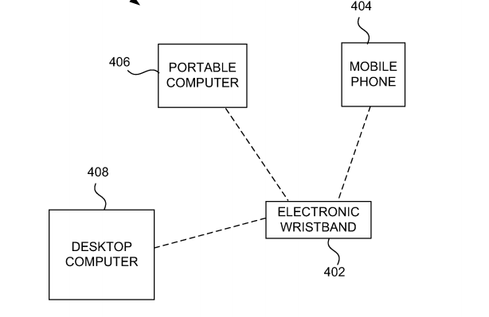
A modular approach would allow Apple to make various mobile devices for its wristband that are both thin and designed for optimal functionality, rather than a single device that tries to be all things to all users, a difficult design challenge. A modular approach would also encourage the sale of multiple devices -- chances are Apple customers will find more than one that's useful. What's more, swapping removeable devices in one's wristband would
probably be a better way to manage battery life than periodically removing a module for charging and not having access to its communication capabilities.
The modules for Apple's electronic wristband could include: an updated iPod Nano, a fitness module, a health module, an authentication and identity module, a notification module, a personal security module, and devices that mix and match these and other functions. The hardware could consist of some or all of the following: a touch-sensitive screen, an audio jack, a speaker, a microphone, an accelerometer, an antenna, a GPS receiver, a gyroscope, a haptic feedback device, a wireless communication transceiver, and sensors that measure proximity, biometrics, or force.
Apple's patent and illustrations suggest the company has reimagined its digital hub strategy for wearables. One drawing shows Apple's electronic wristband with three lines radiating outward, to a desktop computer, a portable computer, and a mobile phone.
Figure 3: 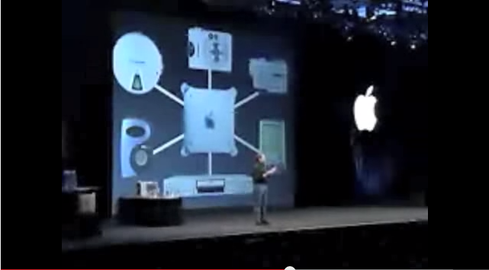
Apple presented a conceptually similar graphic way back at Macworld 2001 with the debut of its digital hub strategy (see above). In that instance, the Mac rather than the wristband stood at the center. But Apple's approach to hardware remains the same: Make its devices complement one another so the whole ecosystem has more value than a similar set of devices from several different vendors.
Of course, technology has changed since 2001 and wireless connectivity between devices obviates the need to have a central hub with hardwired connections to peripherals. If there is a central hub today, it's iCloud. But Apple's electronic wristband can be expected to serve as a communications control point, routing messages, alerts, and notifications to and from edge devices and iCloud.
Apple is expected to introduce a wearable device this fall.
In its ninth year, Interop New York (Sept. 29 to Oct. 3) is the premier event for the Northeast IT market. Strongly represented vertical industries include financial services, government, and education. Join more than 5,000 attendees to learn about IT leadership, cloud, collaboration, infrastructure, mobility, risk management and security, and SDN, as well as explore 125 exhibitors' offerings. Register with Discount Code MPIWK to save $200 off Total Access & Conference Passes.
About the Author
You May Also Like






